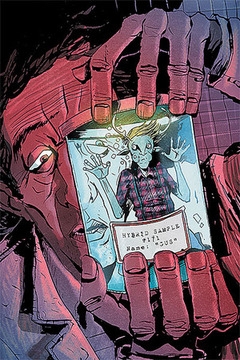Comics /
Comic Reviews /
DC Comics
Sweet Tooth #8
By Zak Edwards
April 12, 2010 - 17:26
When
Sweet Tooth first came out, a select group of people were wary of Vertigo simply replacing one epic, best-selling post-apocalyptic series
Y: The Last Man, with a cheaper version in the hopes of good sales. Of course, those people weren’t familiar with Canadian talent Jeff Lemire, whose works have to ability to quietly move mountains, and Lemire’s Sweet Tooth, while broadly in the same genre of Vaughan’s brilliant
Y: The Last Man, has maintained an incredible amount of consistent brilliance reliant on little more than exchanged glances. A note for those looking for an alternative book for younger readers, Sweet Tooth, and everything published on Vertigo, are probably not what you would consider appropriate.
Anyways,
Sweet Tooth is a quietly powerful book, with most of the significant parts not found in the cliffhangers or even dialogue, but in some of the silent moves of the book. This issue has some of these moments, including Jepperd’s initiation of a fight. However, Lemire picks up the pace of the series in this issue, putting forth a fairly plot heavy experience that is on par with the rest of the series, but contains many different qualities. The plot developments are quite cool, especially considering the final panel, which calls into question much of the reality the story is based on. A great shake-up for those who are not all for the slow pace and many tangents the series can take. I still maintain the earlier issue focusing on the brothel in an abandoned town was one of the better issues, even if it didn’t quite add to the overall plot in an explicit way. Lemire is very much a student of H. G. Wells, the late Victorian writer most known for his novels “The War of the Worlds,” “The Time Machine,” and “The Invisible Man,” the last of which was adapted in Lemire’s graphic novel “The Nobody” last year. The hybrids of the story are very similar to the Beast People of “The Island of Doctor Moreau,” especially in the dream sequence found in this issue. That novel is also famous for introducing the mad scientist archetype, who takes the form of Doctor Singh in this series. The exchanges between Gus and Singh are very interesting, with Lemire putting a religious argument directly against a scientific rationale, with a scary dose of racism present on both sides, and exposes the weaknesses of both arguments. While Gus is fairly ignorant, Singh is deceptively kind to the point of extreme suspicion. It will be interesting to see Lemire develop this relationship. As for Jepperd, his road to ruin, while extremely cliche, using many familiar tropes like alcohol abuse and instigating violence, the journey still feels fresh and moving in this work mostly because of Lemire’s ability to rely on action more than words in those instances, with much of the dialogue being completely arbitrary to the action on the page.
As for Lemire’s art, his rough and expressive style works wonderfully for the book. With a story that relies so much on the capabilities of the artist, Lemire is truly blending word and image together. His characters, while lacking a polish seen in many books, are able to convey so much through the subtle changes Lemire makes to their faces. Also, the artistic components which string the scenes together, most notably in the dream sequence and just after, are very interesting. The dream sequence starts off with gradually growing panels focusing on Gus’s eyes. These panels are connected with a stringy “grr” sound effect, until the bottom of the page reveals Gus is surrounded by ferocious hybrids. Similarly, a blue stream across the panels begins on the next page, flowing into the real world as Gus wakes up. A very cool concept which reminded me of the painted on veil in the
Sandman story “A Game of You,” highlighting something only comics can do. The plaid shirt Gus wears is a bit of straight up arbitrary opinion for me, but the obviously copy and paste of the plaid doesn’t work for me, the shirt always seems so jarring. But other than this very moot point, Lemire’s art and story, completely inseparable, are excellent.
Grade: A Lemire’s story continues to be both consistent and incredible.
A side note: For those who are not on the
Sweet Tooth wagon yet, the trade paperback of the first five issues will be released in May.
Last Updated: January 17, 2025 - 08:20
